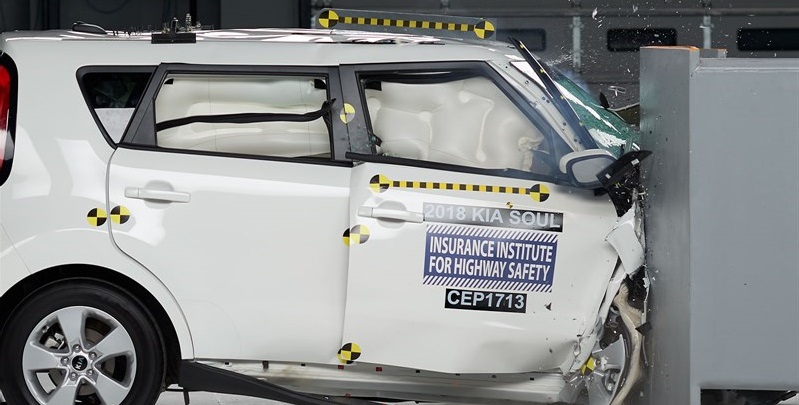Of the 10,000 or so fatal, front-end crashes across the country in 2012, about one-quarter smashed the vehicles’ front corners, giving the occupants much less protection than they’d have in a full-frontal car accident.
Focus Expands Beyond Drivers
Your husband, wife, daughter, or friend riding next to you in the passenger seat deserves protection in the event of an auto accident as much as you do.
That idea, though a natural feeling for most people, is finally coming into focus for auto manufacturers and the experts who rate automotive safety.
Only 15 new car and SUV models (no trucks) meet new criteria meant to provide passengers with the same protection as drivers, according to the Insurance Institute for Highway Safety.
IIHS awards the “Top Safety Pick” honors featured in the advertising of selected manufacturers since 2006. Two new criteria allow carmakers to qualify for new “Top Safety Pick+” designation, first awarded in 2013.
The most-significant new factor for 2018 vehicles requires them to earn a good or acceptable passenger-side protection score in “small-overlap front crashes.” Small-overlap front crashes involve 25 percent of the width of a vehicle, compared to 40 percent for moderate-overlap crashes. In addition, the vehicles need to earn good ratings for their headlights, the institute says.
It’s the first time IIHS has included any passenger-side crash test for its annual award classifications. It developed the new test after researchers concluded that manufacturers weren’t paying enough attention to the passenger side as they improved protections for drivers. IIHS began rating cars and trucks for so-called small overlap crashes in 2012. Those crashes involve only the vehicles’ front corners and thereby bypassing main structural components.
The tests simulate a vehicle colliding (at the front right or front left) with another object such as a car or tree at 40 mph, according to Motor Trend writer Ron Kiino. He cited the institute’s own data showing how deadly overlap crashes are. Of the 10,000 or so fatal, front-end crashes across the United States in 2012, about 25 percent of them involved small overlap contact. Another engineering study, however, puts the factor closer to 8 percent, Kiino wrote. The crashes miss vehicles’ left and right frame rails and bypass the crush protection they provide. Instead, only “superficial sheet metal” stands between the occupant and the object the vehicle is striking.
Aiming for Balanced, Symmetrical Safety
The IIHS researchers weren’t surprised, then, when carmakers began improving structural features on the driver’s side while tending to ignore the passenger’s side. From a statistical point of view, drivers’ seat safety is more important than the rest of the cabin because, as the institute commonly points out, every car and truck has a driver, but not all have passengers. Their ultimate goal, though, was symmetrical, balanced protection.
IIHS conducted crash tests last year and released its first official passenger-side ratings in October 2017.
The IIHS’ president, Adrian Lund, said car and truck manufacturers have done a great deal to improve driver and passenger safety over recent decades. They are aware of how important safety is for consumers choosing a new vehicle and they are working more intensively with institute engineers to protect riders.
Lund said:
“Drivers expect that their passengers, who are often family, will be protected just as well as they are. … Manufacturers have been taking this issue seriously since we first shed light on it, and we’re confident that good small overlap protection will become the norm on the passenger side, just as it has on the driver side.”
Headlights Being Put to the Test
IIHS began rating headlights only recently and released its first results in early 2016. At first, only a few did well on institute test tracks as researchers measured how much illumination — and glare — high beams and low beams cast on the road ahead and into oncoming traffic. Lund said manufacturers have been treating headlights as style components instead of as critical safety equipment — a trend that is changing. Each of the 62 Top Safety Pick award models has headlights that are acceptable or better. The institute emphasizes that the superior headlights are optional equipment in most of the winning vehicles. Consider ordering up.
Vehicles in the Winner’s Circle
The “Plus” top safety picks include four small cars, three midsized, five luxury cars, two midsize nonluxury sport utility vehicles and one midsize luxury SUV. No pickups, minivans, or minicars earned the award.
The garden-variety top safety pick award went to a wider variety of vehicle types, but none of them was a minicar.
You can read the 2018 results here.

